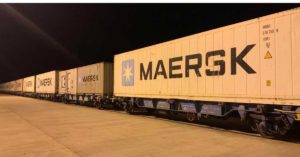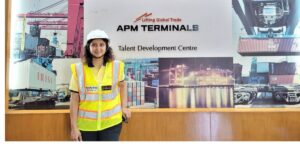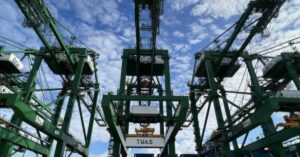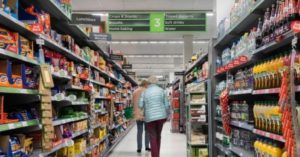“India is one of the very few countries where digitalization has been led by the govt. Today, any inspector on the highway can just login to a portal and say this truck is carrying these goods for this place. That system in India is exemplary it has not happened anywhere else,” shares Jasjit Sethi, CEO, TCI Supply Chain Solutions
Our industry is talking about digitalization especially in shipping and logistics sectors. Today, we have a lot of these technologies coming into operation; there is a big data being used and Artificial Intelligence, and Machine Learning. Can you give me idea of how much of technology and digitalization being used in our industry either for improving operational efficiency, predictive analytics or serving the customer better?
It’s a very relevant question; there are two dimensions to it. The first dimension is what the corporate themselves are doing. The composite of fact that every cargo, which moves from point A has to be tracked all the way till point B, and then also get the relevant proof of deliveries (PODs) in order. So, over many years people were struggling with that very basic. But for over last 8 to 10 years that problem of track and trace has been solved.
India is one of the very few countries where digitalization has been led by the govt. There are not many countries where you have something called e-way bill. E-way bill came as a consequence of GST which was based on consumption. Since that has always been the case some states like UP, Karnataka have a traditional system. There was a need to prove that goods have crossed my state and not being sold there as a provision of tax. When GST came in Pan India first threat was the traditional system, which was a menace earlier, and you would have long queues at all the state borders. This was solved digitally by the government by saying that everything which is going out has to be put on to a portal and based on that portal you then track it. Any inspector on the way can just look at that track and say this one is carrying these goods for this place. That system in India is exemplary it has not happened anywhere else. Look at the European Union despite being so advanced they have not done that. They are still very much relying on internal compliances.
One part of that is by the government and second is the payment interfaces. They are probably the best anywhere in the world, very low cost not like credit companies, and a lot of payment interfaces are there like UPI systems. You also have a lot of others which are supporting the system and these supports are for example bill of lading has become electronic, in terms of an invoice nothing physical needs to be carried. Whatever we are doing we can upload it on a certain portal. So, flow of advice from the banks doesn’t come in any more, it is only through their portal. So, the paper has been reduced. If you look at the chain from order from a customer to its fulfillment may be through warehousing, their delivery, then finally to payment. This chain is now almost digitized. This has happened because of something very simple called Application Programming Interface (API). I remember way back when we began digitalization in 2007, we had taken something called Electronic Data Interchange (EDI), as a substitute for e-mails. For that you required some kind of platform and data. API is now everything linking together base all the software. API has made everything like a blockchain. Individual ERPs and government portals are all linked through APIs. The journey has been very good for India. With ONDC coming in you will see much more democratization of data information.
At one level we have digitalized the entire mechanism. But how about using the more advanced tools like AI and ML?
I think in terms of analytics, if you look at a typical curve, what would be there was actually what happened, then it would be why it happened because that would prevent you doing it further. What can happen for example when you are travelling using Google map it shows you where the traffic is, what’s your estimated time of arrival (ETA), so what can happen. In our trucking we are also looking at things like which are the historical areas of congestion where we have issues of no entry, so we do that predictive. And the top most is prescriptive – making things happen in that way.
What AI and ML in terms of synergy will do is something that goes beyond the present algorithms. We are still right now evolving on that stage in terms of using a little bit of intelligence on our systems. ChatGPT is used more by the public and by the common man than the corporate now. They are still grappling with it now as to how to make AI a centre piece of this. But going forward you find that many of the tasks which were done earlier are done by bots and not by chat bots, which can be horrendous. I am not a fan of them at all.
The bots, algorithms, and a little bit of prediction are being done already. These are not old technologies, they are very new, so it will take some time for companies to go further, but at the latest it is already being used. Maybe in the next two to three years we will see more of it in the common place.
You spoke about democratization of data; so, there were always these concerns about ownership of data and its security. How far are these concerns being addressed?
They remain, and they remain a lot. One thing is who knows what? And also does the government know too much? Because that also leads to an issue, at some point of time. For example, it could lead to issues with health data which are there with the government. For example, we have employees and we have their health data on a government website. The person wants to apply somewhere else or do something he is prohibited by that. So, there can be many of these pitfalls. I think the data law in terms of what needs to be kept and for how long has to be very rigidly performed and probably some of the data is not required to know. I think we have not yet gone there, but if you are signing up for many of the sites now, here is an option called mask my email and they will generate an email ID which is not yours and it is linked back to you and you are safe from spam.
What is your perspective on the cost of logistics? What the government is doing today is it enough to reduce the logistics cost?
On the cost of logistics there is a debate and there is no debate. If you look at the data, they were showing that road network is $150 billion and it is 65 per cent of the overall spend, railway was 29 per cent, all together $200 billion. There is simple math to be done $200 billion by GDP which is about $3.8 trillion, so you will get the answer there. But there are some figures branded about which don’t have a basis. You know a percentage is based on a numerator and denominator. The numerator every body is saying is a figure of $200 billion the denominator is GDP so the figure is already a foregone conclusion. I always maintained that GDP of a country is a composite of the services, manufacturing and agriculture – three major heads. In our country like US the services are very high, in US the services are about 80 per cent and in India it is about 60 per cent. Services does not use logistics besides public transportation. Logistics is mainly used for manufacturing trading and agriculture. Therefore only 40 per cent of the GDP per say is using logistics services in terms of rate. So, a figure of dividing by GDP itself is probably wrong. $200 billion divided by $3.7 trillion it would be around 7 to 8 per cent.
Now is the government doing enough or not, I think wavelength makes a big difference. The intra modal it will make a big difference there and the inter-modal has already started a lot during the Covid. We have people like ourselves who have 50-odd yard terminals which are multi modal. So today about 20 per cent of our revenue comes from multi modal. So multi modal is in a way combining the best of all the modals. Long distance by a greener transport which is railways using electric, short distance by truck which has got flexibility.
However, the bottlenecks here include speed of the MMLPs, and they have to come in right locations. Other drawbacks include heavy taxes which is about 30 per cent on purchase of trucks and humongous amount of VAT on fuel.
On the shipping side new laws are coming to make ships compliant to certain fuels and age. Which will hamper coastal shipping.
Are you still active in coastal shipping?
Yes, very much but these couple of new rules are going it to push it back.
The experts who are in coastal shipping are saying that the growth is disappointing? What has been your experience and what do you want to change?
I think in terms of growth it is quite good in right sectors. What do you move in sea something which is heavy and something which is near a coast. If you see the movement today from Gujrat coast something like tiles and steel. It is very high in the western coast. I don’t think much of tiles moving from north to south by road or rail. There has been good shift in to sea and that has also picked momentum.
If you look at waterways, I don’t think you will ever work in India. For two simple reasons first, the rivers are not straited they are main ring rivers Banaras, Varanasi to Haldia the river is 1.5 times longer than by road. Second the rivers are silting and they don’t have enough draught which is just 2.5 feet and you need 8 feet for ships to operate. Waterways are good for tourism and therefore don’t need to put much effort and energy on making them ready for shipping.
Why only some multimodal logistic parks are coming up in spite of govt announcing several MMLPs? Is it the lack of interest or any challenges in it?
There was an effort by the govt to put them under one umbrella under Gatishakti. There also some rules which have been set forth for that. To the credit of the govt these are still early days. And the other side is the other agencies be it the Railways, be CWC, be it the private players plus NHAI which is doing MMLPs also they are still not under a common framework. All of them are still not under one umbrella and it is not easy to get work done in different ministries it is not an easy task. That is what we are facing.
You have operations in our neighbouring South Asia nations like Nepal and Bangladesh. How is the trade growth, what’s your perspective on trade in these two countries?
We began Nepal dock years age in 1970s. that was main trading partner for India. Then we began Bangladesh. We are moving a lot of cargo to Bangladesh through train to decongest road network. In terms of working and operations Bangladesh is very good. Our experience with Bangladesh is very good compared to Nepal. We are also expanding trade links with UAE. Sri Lanka is still on hold.
What are your plans for investments and expansions in future?
TCI has been an end-to-end player across the services. We began as trucking origin to express cargo which is moving the goods faster and on time to logistics and supply chain which is knowing what is in that cargo. We have also forayed into production logistics and warehousing. We felt the need for a multi modal platform and we have tied up with shipping on east and west coast as well. TCI has joined CONCOR for over 14 years. We are incubating cold chain network within the company. We made a separate company in 2018 which is doing very well to serve food and pharma segments. We are also incubation a chemicals portfolio, which we will show case as another vertical.












